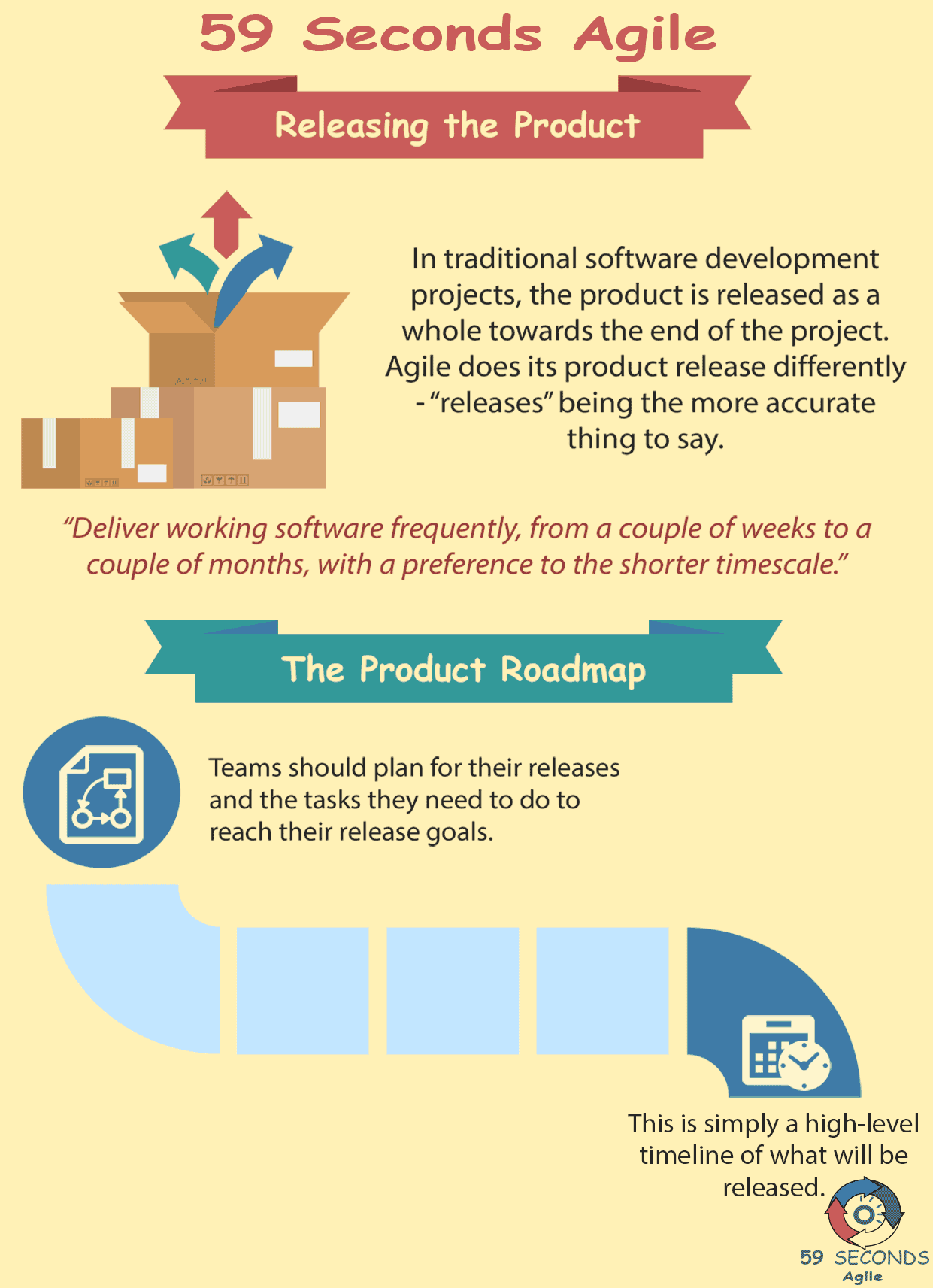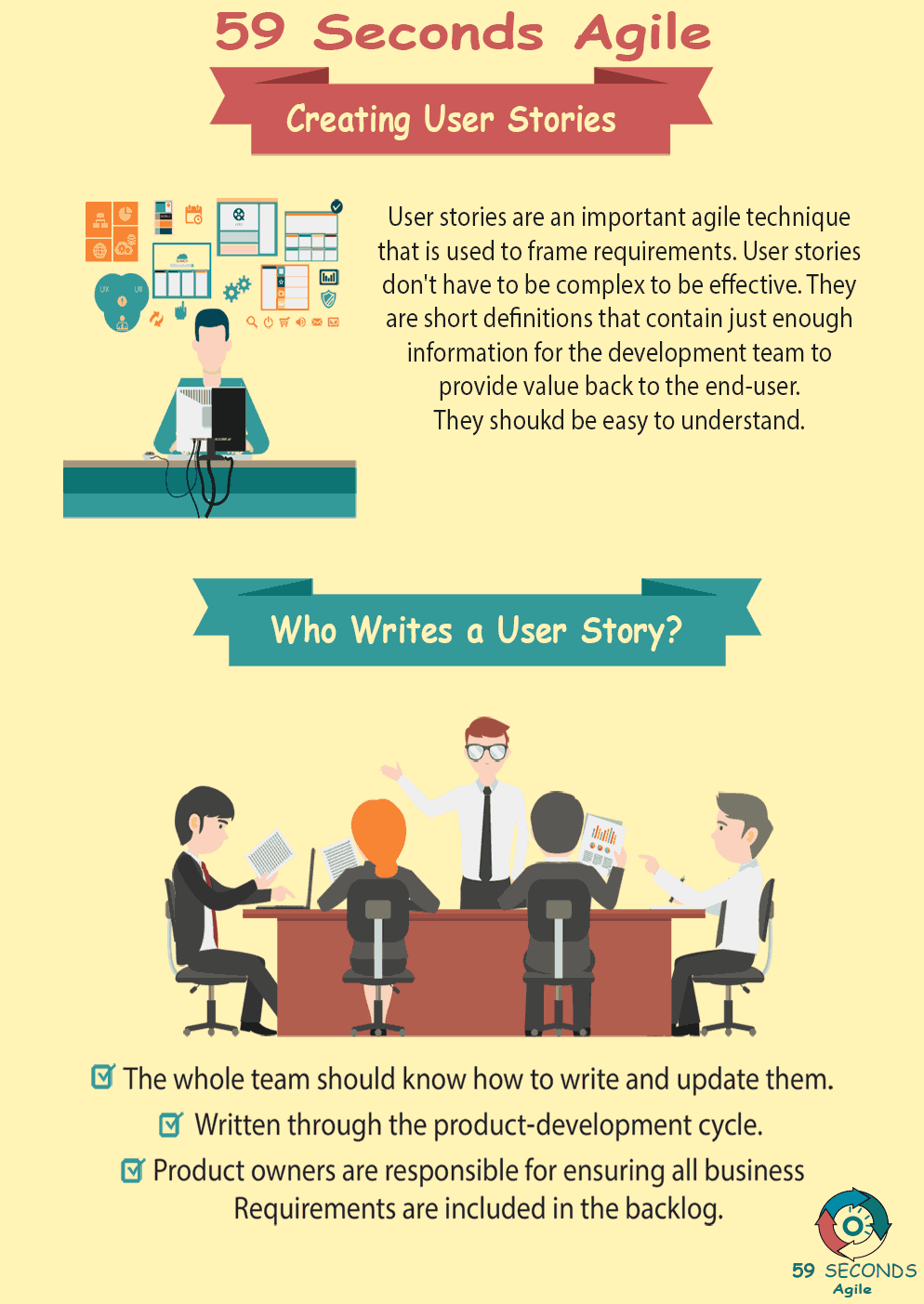How is a New Product Release conducted within an Agile project and is launching a new product any different to a traditional project? We shall explore an Agile projects products launch and what is Agile release planning and see how it impacts the Scrum Developer role.
Estimating Scrum Tasks
A 59 Seconds Agile Video Animation
New Product Release and Launching a New Product
A 59 Seconds Agile Article
In Agile software development, the developer role is undeniably important. Developers are the driving process behind new content creation. After creating software, they are also in charge of fixing problems with the product. Throughout the process, developers also contribute estimates for task complexity and size.
Developer responsibility does not end after the software has been created and fixed, however. Even in the product release stage, developers play an important role. The Product Owner is usually seen as the main role during the product release, but they rely heavily on developers for a number of parts.
New Product Release: Deployment Methods
After all the hard work of creating and debugging a product, the software must be deployed to stakeholders. The means of distribution can vary based on three components. Most noticeable for stakeholders is how convenient the method is for them. Beyond convenience for stakeholders, the cost of a deployment method and convenience for the Scrum team also matter in the decision. The chosen deployment method needs to be a good balance of all three.
New Product Release: The Developers Role
Developers have a large role in choosing the deployment method, even if they are already finished with product creation. Product Owners handle determining what method is most convenient for stakeholders. Convenience for the Scrum team and cost analysis benefit from the developer role. While developers rarely see an organization’s budget, they do have an intuition for what deployment methods are more or less expensive. Given the scope of a release, developers usually know the lowest cost option. In addition to cost, developers know the steps involved with most possible deployment methods. They can shed insight on what will be simple or complex, and compare that with the option costs. The Product Owner may be best for interfacing with customers, but developers are equipped to find the best option for the team and the product.

New Product Release and the Release Communication Plan
As the name implies, the release communication plan involves communicating with stakeholders. As a general rule, developers are rarely in charge of communication outside of the Scrum Team. However, this does not mean that developers are not useful in the process. Developers have the best understanding of how a software product works. Therefore, they are more equipped to answer stakeholder questions about releases. For more complicated releases, developers can give step by step instructions. Since developers wrote the code, they usually know exactly how to make it work.
New Product Release and the Deliverables Agreement
The agreement of working deliverables is a decision made by the Product Owner as a representative of the Scrum Team (Scrum Master, Product Owner and Development Team) , and the stakeholders. However, the Product Owner does not always know everything about the deliverables. Since developers are in charge of writing code, they may often know more about the deliverables than the Product Owner. As such, developers are important in the agreement decision.
Developers most frequently play a part in how deliverables will be broken up or grouped for sprints. If one deliverable is particularly large, it may need to be broken up into multiple pieces. Developers know best where the division should be made. A knowledgeable developer can break apart a single deliverable into pieces that each give value. Instead of waiting for multiple sprints without added value to the total software, customers get small chunks and features over time.
Prev <— Continue Reading —> Next
Learn More: Writing Agile User Stories
User Stories Applied
A 59 Seconds Agile Book Review
User Stories Applied by Mike Cohn is one of our favourite books. The book starts with an overview into user stories, and details what they are and the different aspects of them. He then discusses how to go about writing a user story, and provides details of the INVEST criteria that can be used to determine if the requirement objectives are met. Next Mike gives an in depth discussion of who they are written for and where to begin when gathering the details for them. The book then discusses acceptance testing user stories, including how to go about specifying these criteria and the responsibilities of the development team and customers during this process.
Prev <— Continue Reading —> Next
Learn More: Writing Agile User Stories
Writing Agile Stories
A 59 Seconds Agile Infographic

Prev <— Continue Reading —> Next
Learn More: Writing Agile User Stories
Our Favourite Agile Books
We found these books great for finding out more information on Agile Scrum:

